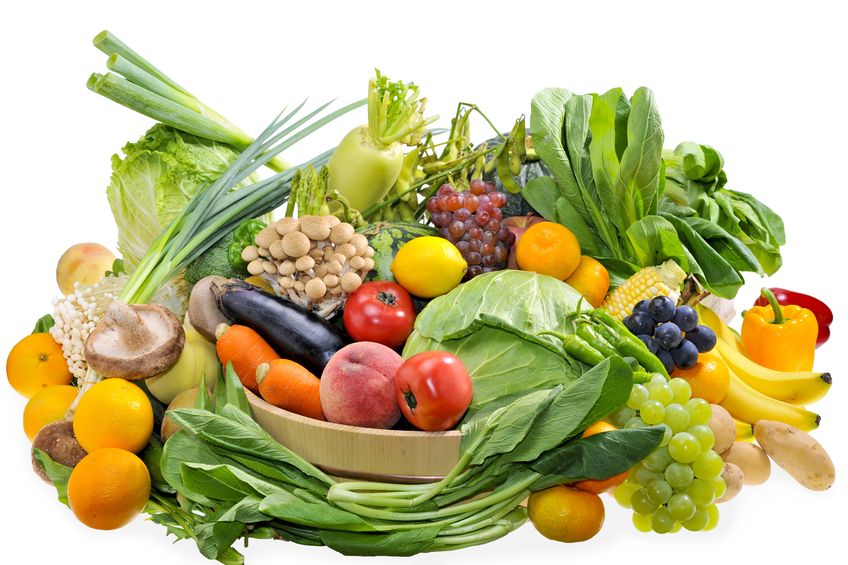Easy ways to eat healthy are more important than ever. Eating well is a crucial part of a healthy lifestyle and can help ward off conditions like type 2 diabetes, heart disease, and even some cancers. However, everyone has their own unique health needs, so it’s important to talk with a doctor about what sort of diet is right for you.
In general, consuming a plant-focused diet rich in fruits, vegetables, whole grains, and sources of protein is healthy for most people.
Amanda Miller, a registered dietitian from Chicago who specializes in weight loss and medical nutrition therapy and Alana Kessler, a registered dietitian and nutrition consultant based in New York City offer their advice:
Here are Some Easy Ways to Eat Healthy
Don’t over-complicate it. Here are some easy ways to eat healthy.
1. Eat more fruits and vegetables
Fruits and vegetables contain many vitamins and minerals your body needs, like:
• Fiber, which eases constipation and aids in digestion.
• Magnesium, which supports bone health.
• Potassium, which helps maintain healthy blood pressure.
• Vitamin A, which protects against infection and keeps skin and eyes healthy.
• Vitamin C, which aids in iron absorption and keeps your skin and gums healthy.
Eating fruits and vegetables can reduce your risk of disease. A large 2018 review found a diet rich in fruits and vegetables reduces markers of inflammation, which is associated with chronic health conditions, like heart disease, cancer, and diabetes.
The recommended amount of fruits and vegetables you need each day varies based on age, sex, and physical activity. Here is how many servings you should be eating according to the U.S. Department of Agriculture (USDA):
2. Choose whole grains
Whole grains include the entire kernel of wheat. Each part of the grain contains important nutrients like:
• Bran, the outer layer which contains fiber and B vitamins
• Endosperm, the inner layer which contains carbohydrates and protein
• Germ, the core which contains B vitamins, healthy fats, and vitamin E
White or refined grains undergo a process that removes the bran and germ, resulting in a finer texture and improved shelf life, but a loss of fiber and B vitamins, Miller says. Refined grains still contain carbohydrates and protein, but whole grains contain more fiber and micronutrients and offer more health benefits.
A 2020 analysis of randomized controlled trials found consuming whole grains instead of refined grains can improve total cholesterol and lower the risk of cardiovascular disease.
Most people should aim for at least half of the grains they consume a day to be whole grains, Miller says. The general recommendation is between three and eight ounce-equivalents a day, depending on your age and activity level.
Examples of whole grains include:
• Whole grain bread
• Whole grain pasta
• Brown rice
• Quinoa
• Oats
3. Limit processed foods
Processed foods have been changed from their original form and cooked, packaged, canned, or frozen. Fortifying and preserving these foods can also change their nutritional composition and as a result, heavily processed foods are usually high in calories and low in nutrients.
Examples of heavily processed foods include:
• Chips
• Cookies
• Candy
• Cakes
• Cured meats, like deli meat
• Hot dogs
• Frozen meals made with refined grains and sodium or sugar-rich sauces
Salt, sugar, and preservatives are usually added to processed foods, which can have negative effects on your health, like an increased risk of heart disease, says Alana Kessler, a registered dietitian and nutrition consultant based in New York City.
Two large 2019 European studies found an association between ultra-processed foods, like sugary cereals and baked goods, and cardiovascular disease. Additionally, the World Health Organization classifies processed meats as a carcinogen — a substance capable of causing cancer. Research also links processed meats to diabetes and cardiovascular diseases.
To cut down on health risks, Kessler suggests swapping out processed foods for healthier alternatives, like:
• Sparkling water or tea instead of soda
• Plain oatmeal or yogurt instead of sugary cereal
• Plain popcorn instead of chips
Packaged foods are technically processed foods, but that doesn’t mean you need to cut them out entirely, Kessler says. Some packaged foods like frozen fruit and vegetables ensure nutritional quality and can make eating well easier and more convenient.
4. Practice portion control
Portion control is when you eat the recommended serving sizes of foods throughout the day.
Eating incorrect portion sizes can negatively impact weight, metabolism, hormone balance, and energy, Miller says.
Practicing portion control requires mindfulness about what you are eating and how much, Miller says. Understanding serving sizes can also help you structure a healthy plate consisting of half fruit and vegetables, a quarter protein-rich food, and a quarter whole grains.
Miller suggests these tips for understanding serving sizes and practicing portion control:
• Look at the food label to know how much one serving is. Remember some foods like pasta and rice puff up when they’re cooked. The label will tell you if the serving size is for cooked or uncooked portions.
• Try pre-portioning your food into a small bowl or plate to keep yourself from overeating right out of the bag or tub. “If you ever spoon out ice cream from the tub, chances are you consume way more than the suggested serving size,” Miller says. “Free-spooning from the tub could lead to consuming two to three times the suggested serving size.”
• Pay attention to high-calorie foods. Nuts for example are very nutritious and have healthy fat, but they are also high in calories. Most nut labels will suggest about a one to two-ounce serving — which is about 30 almonds.
• Be careful with beverages, specifically loaded coffee and teas, Miller says. All the syrup, sugar, flavorings, foam, and cream add fat, sugar, and calories to your drink. If you are craving such a drink, opt for the smallest size available.
Click here to read about more easy ways to eat healthy.






